(click on images to view bigger)
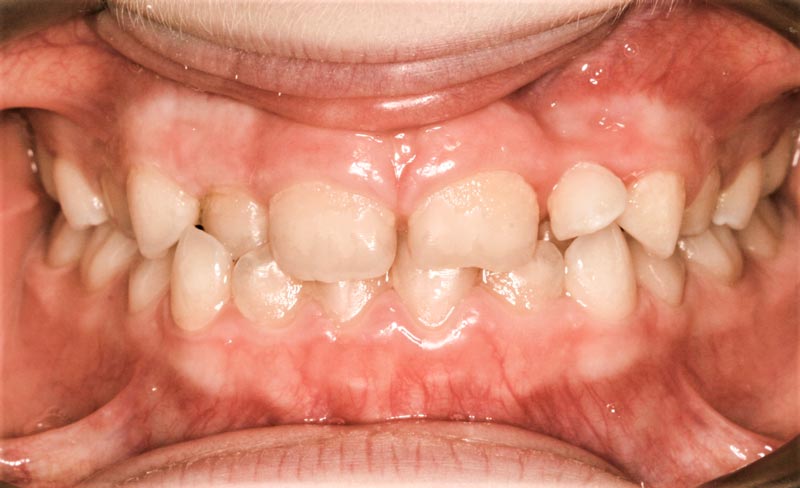 All upper teeth should overlap the lower teeth on the outside. If this is reversed, such as the lateral incisor we see here, it calls for immediate intervention.
All upper teeth should overlap the lower teeth on the outside. If this is reversed, such as the lateral incisor we see here, it calls for immediate intervention.
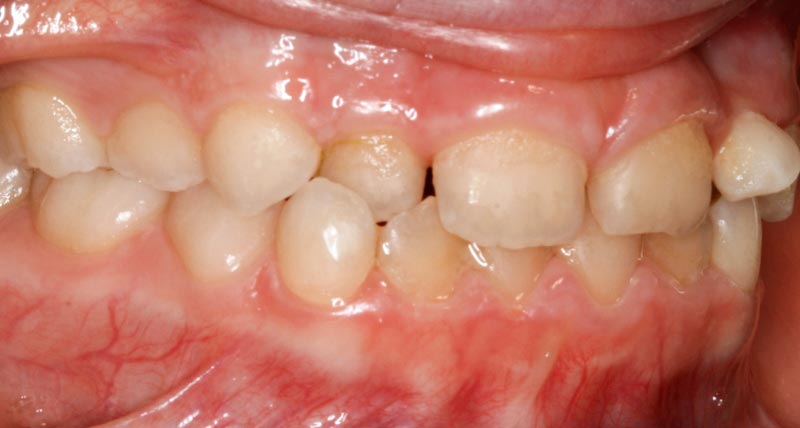 The crossbite happens when there is no room for the permanent tooth to erupt, and it comes out twisted, turned, or here in the wrong position – more palatal.
The crossbite happens when there is no room for the permanent tooth to erupt, and it comes out twisted, turned, or here in the wrong position – more palatal.
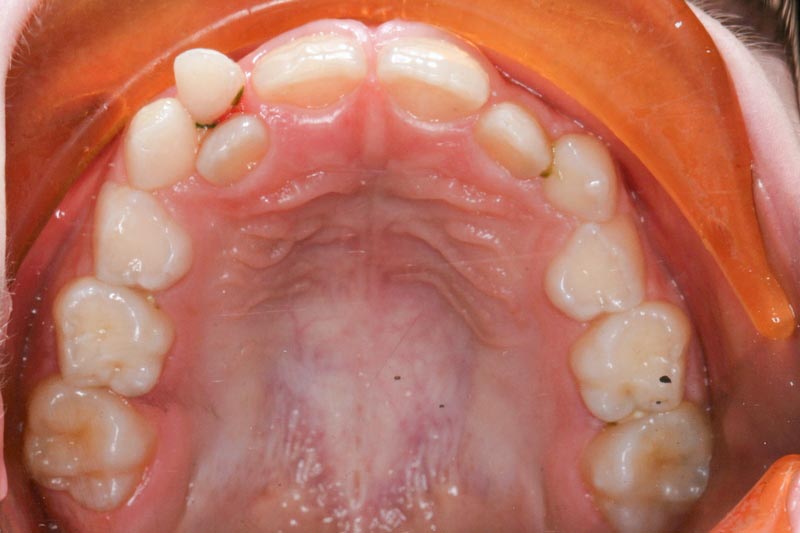 In this case the persistence of the baby tooth it was meant to replace made things worse. The permanent tooth by-passed the baby tooth and erupted more palatal.
In this case the persistence of the baby tooth it was meant to replace made things worse. The permanent tooth by-passed the baby tooth and erupted more palatal.
 The course of action was to expand the upper jaw, but also to open it vertically so the tooth in question is free to move out of its crossbite. The vertical bite opening is achieved by adding composite to the lower baby molars (read more in Orthopedic Bite Opening.)
The course of action was to expand the upper jaw, but also to open it vertically so the tooth in question is free to move out of its crossbite. The vertical bite opening is achieved by adding composite to the lower baby molars (read more in Orthopedic Bite Opening.)
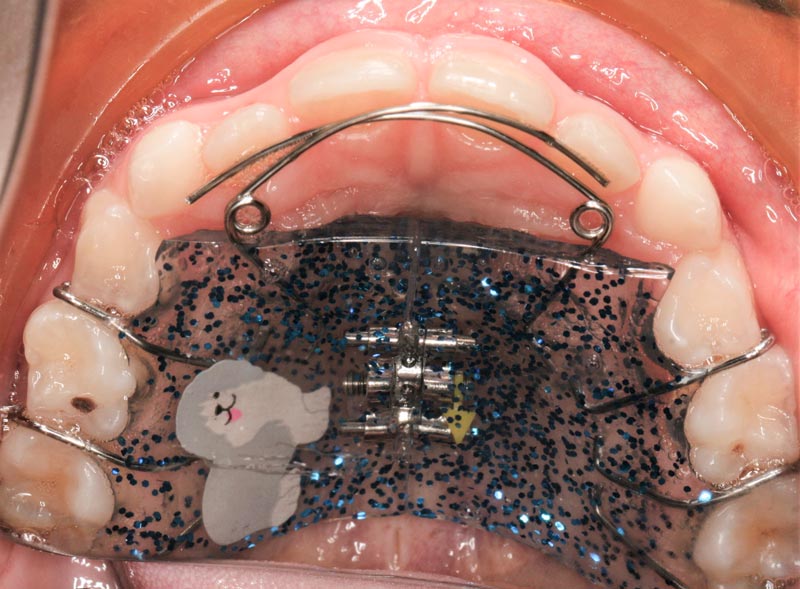 After the initial appliance, another one was made to continue arch development. At this stage a lower appliance was also made to keep up with the upper arch.
After the initial appliance, another one was made to continue arch development. At this stage a lower appliance was also made to keep up with the upper arch.
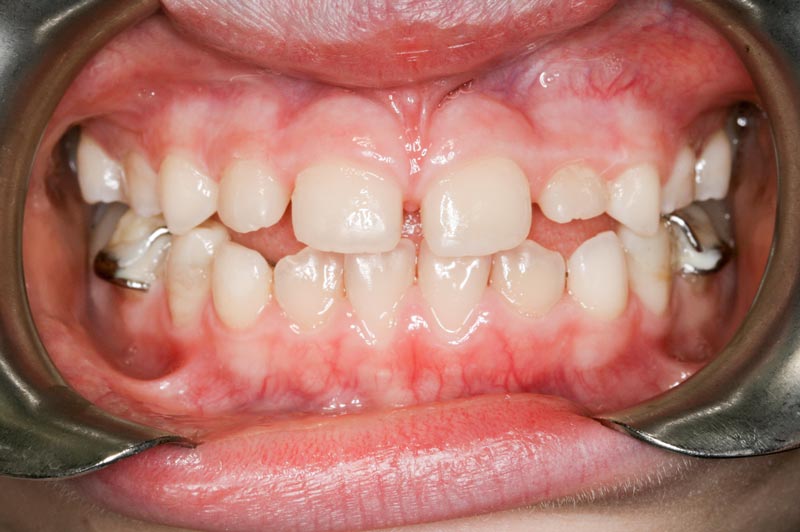 At this stage we slow down the rate of expansion of the appliances, which are basically worn as a “retainer” until the baby teeth become loose.
At this stage we slow down the rate of expansion of the appliances, which are basically worn as a “retainer” until the baby teeth become loose.
 The smile has widened, all the teeth are in good alignment, and as the permanent back teeth erupt in a year or two, the spaces will be eliminated through the natural forward drift of the back molars.
The smile has widened, all the teeth are in good alignment, and as the permanent back teeth erupt in a year or two, the spaces will be eliminated through the natural forward drift of the back molars.
Pertinent links:
- Non-extraction Orthodontics – Frequently Asked Questions
- Article: One-sided Crossbite in Children